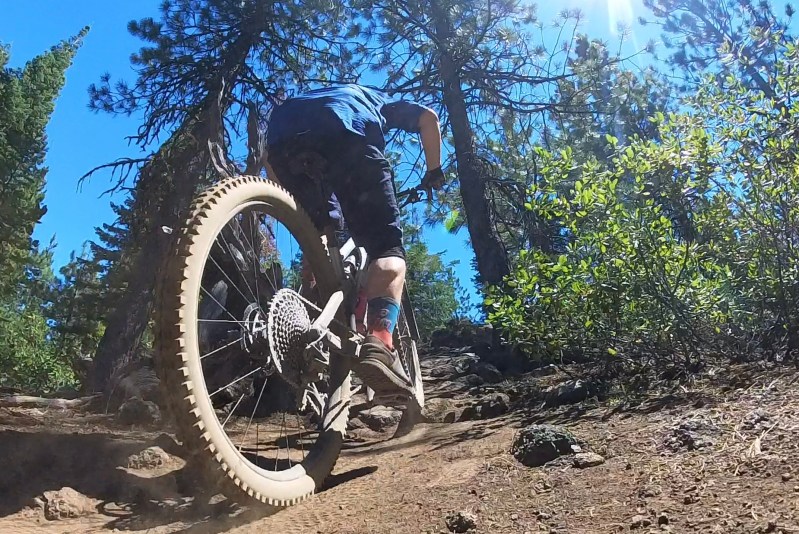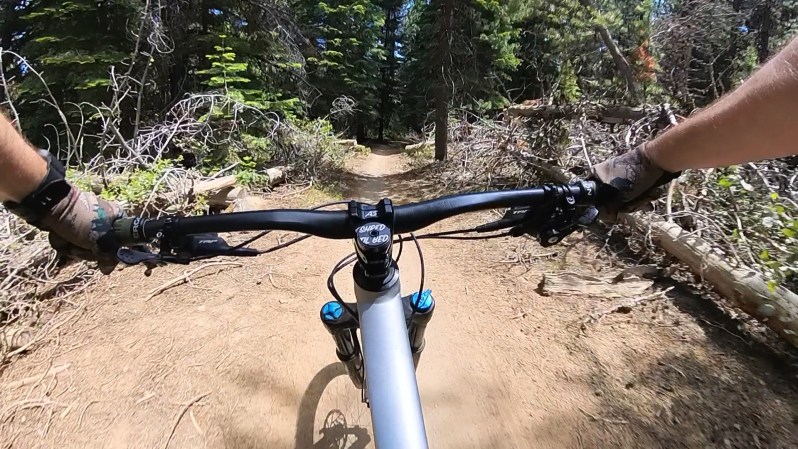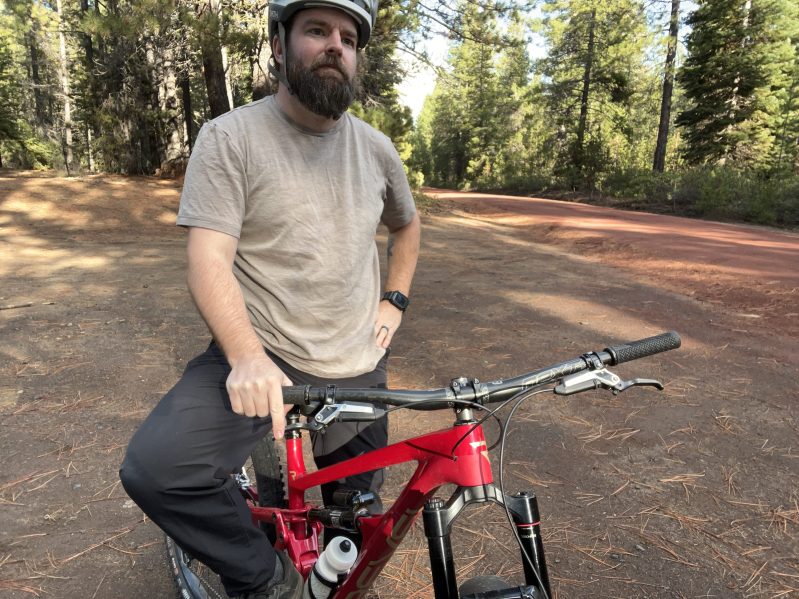
Like any other sport or hobby you take up, you will hit plateaus as you progress in mountain biking. They are frustrating, but they are inevitable. But what brings them on?
The truth is that it could be many different things. You may have some bad habits that you need to break. Or, perhaps life’s circumstances—work, significant other, kids—have your time on the mountain bike looking more and more minimal.
Life happens.
But if you feel like your mountain biking time hasn’t been neglected, yet you are still in a slump, perhaps one of these three reasons could be holding you back. Or, hell, it could be all three.

The mountain bike’s fault
Yes, it is true; there are times you can blame your lack of progress on your mountain bike. Mountain bikers like to do it anyway, but be more specific about the reason.
But, sometimes, the entire mountain bike holds you back from progression. This is usually because of a couple of reasons.
You have the wrong mountain bike
First, you may have the wrong bike for the type of mountain biking you are doing. You can head to your local bike shop and spend several months rent on a new mountain bike but still be held back if it isn’t the correct type of mountain bike.
For example, if you purchase a cross-country mountain bike, you will find the bike fast and efficient, especially when climbing. This same bike that has you flying up hills will have you terrified on long descents.
This is because a cross-country mountain bike’s geometry is designed to have the rider’s weight forward. Descending with your weight over the bars will make you feel like you will soon go over the bars. Plus, the components of a cross-country bike aren’t made for constant, fast descending. Having a bike that matches your style of mountain biking is key.
Your mountain bike is too old
The other reason your mountain bike may hold you from progressing is that it is too old. No, you don’t need the latest and greatest, but mountain bike engineering has progressed quite a bit in the last few years. A 2017 model can be vastly different than the same bike in 2023.
The biggest thing that has changed is geometry. A ten-year-old trail bike will have the same geometry as a modern-day cross-country bike. However, the decade-old bike won’t climb nearly as well due to more extended suspension travel and a reasonably slack seat post.
If you feel like you’re not progressing and your mountain bike is ten years old, it may be time for a new bike day.

The trail’s fault
If it isn’t the mountain bike’s fault, blame it on the trail. In all seriousness, where you are choosing to go mountain biking can significantly impact whether you are progressing or not. Again, there is usually a couple of reasons for this.
The trail is too easy
First, you may be riding on trails that are too easy. To progress in mountain biking, you have to push your limits. If you aren’t finding that boundary and trying to get beyond it regularly, you won’t progress.
Going beyond that boundary may mean advancing from beginner to intermediate trails. Or perhaps it is time to go from intermediate to advanced.
Wherever you fall on the mountain biking skill spectrum, there are easy ways to progress safely. If you jump up to the next level of the trail, initially ride it slower and scout features you are unsure of. Don’t be ashamed to walk features you are not ready for but take note of them and put them on your list to work toward.
The trail is too advanced
The other reason you may not progress in your mountain biking skills is that the trails you are riding are too complicated. You have bit off more than you can chew and spend the majority of your time on the bike trying not to die.
This can be especially true when mountain biking, primarily at bike parks. Mountain bike parks are fast and rough—they typically share land with ski resorts, so even the easiest of trails are fast.
It can be challenging to work on the skills needed to progress when you are on trails with such high speeds. Bike parks can be great places to advance, but you must first be comfortable with steep terrain, high speeds, and chunky trails.

Your fault
We can’t blame everything on our mountain bike or the trails we are riding. Oftentimes, our mountain biking isn’t getting better due to us holding ourselves back.
Holding ourselves back isn’t the same as the life circumstances discussed earlier. The responsibilities we have in life can’t be neglected, and unless mountain biking is paying your rent every month, it is understandable if it isn’t a top priority.
But, if you have decided that you want mountain biking to play a crucial role in your life, you will have to commit time to and work at it.
It may mean getting up a few hours earlier to get a ride in before work. Sunrise rides are some of the best times for mountain biking, especially if you are working on a skill. Typically, the trails are empty, and you don’t need to worry about getting in another rider’s way.
Perhaps progressing your mountain biking skills means changing your diet and adding an exercise routine off the bike. Strength training can provide some crucial gains you will notice on the mountain bike.
The list can go on and on with ways that we hold ourselves back in mountain biking. You likely have the means and the know-how to move beyond the hurdles. But we can’t move beyond those hurdles unless we recognize them and intentionally move beyond them.
Editors' Recommendations
- Mountain bike gift guide: 12 fantastic ideas for the mountain biker in your life
- Mountain bike maintenance during the off season: 3 things you need to do
- Ski and snowboard apparel brand Trew Gear crosses into the mountain bike world
- How to resurface your mountain bike brakes
- Canyon bikes introduces all new Lux Trail mountain bike lineup with 4 unique models




